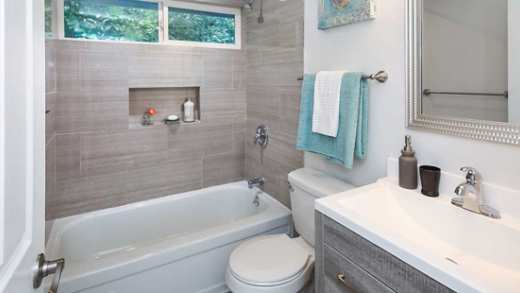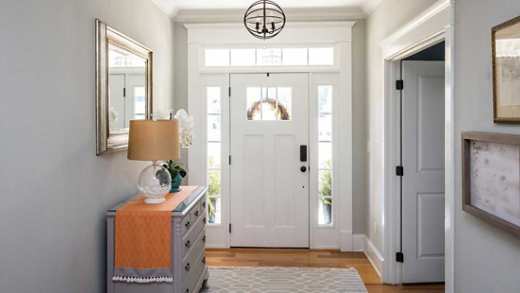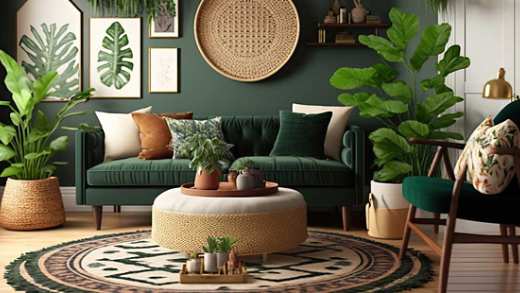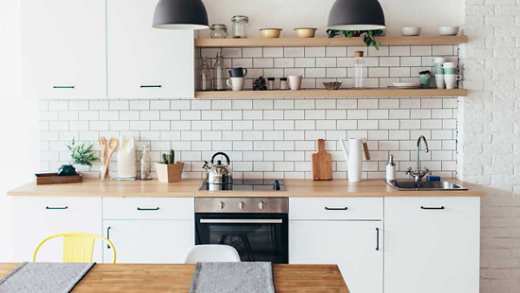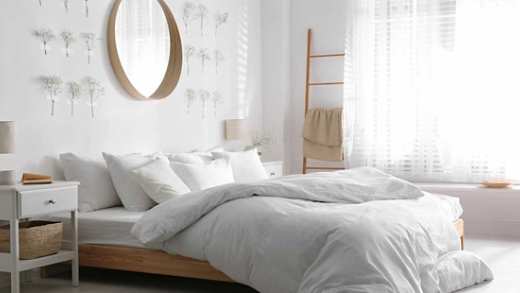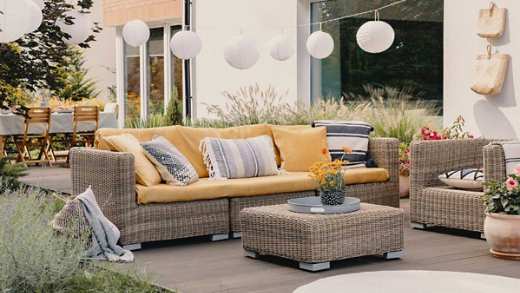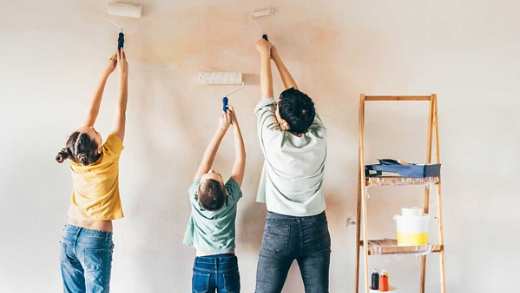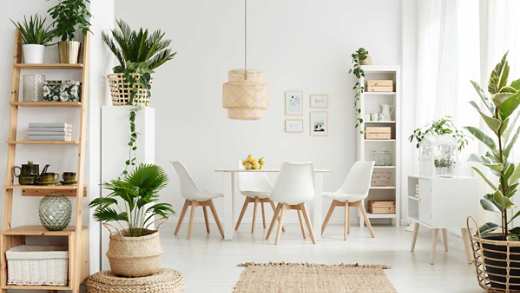Looking to give your home a fresh and revitalised look without breaking the bank? You don’t have to splurge on new furniture and fittings to get the glow-up effect – a fresh lick of paint can help to update any room.

We gathered 8 top painting tips from the expert Kevin Coghlan, an independent consultant and previous Managing Director of award-winning paint and painting tool supplier MRCB. He shared with us simple ways to easily achieve a professional finish when decorating your home DIY-style.
1. Preparation is key when painting your house
Before you start, it’s essential that you properly prepare each room. Kevin says: Be sure to move all furniture away from the walls and towards the centre of the room.
- Cover all items with cloth sheets to ensure that they keep safe and well covered from any paint splatters that might occur.
- Lightly sand your walls to ensure a smooth surface if applicable. All walls should be clean, dry and as dust-free as possible before painting.
- The areas around light switches and sockets may need particular attention when cleaning, as dust and oily finger marks can accumulate more easily.
- If possible, remove your curtains before painting.
- Place a drop cloth or layers of sheets on the floor to keep it protected.
- Cover your windows, door frames and skirting boards with tape and cloth before you start, or have some clean, damp cloths to wipe away any splatters as you paint before the paint dries.
2. Essential Painting Tools
IIt’s a great idea to plan so you have the necessary bits and bobs to do the job effectively. Kevin’s professional painting tip: Invest in good quality rollers and brushes. Spending a few extra euro is worth it and you’ll be sure to notice the difference! More paint will be picked up by the brush and roller so you won’t need to re-dip as often, and the paint will be dispersed more evenly – resulting in a flawless and more professional looking finish
- You should also equip yourself with a good selection of brushes; a smaller brush is perfect for cutting in around ceilings, door frames, windows, cupboards, and skirting boards, while a slightly wider brush is better for painting doors.
- Beware of very cheap masking tape - it can tear paint when being removed or leave behind some adhesive on the wall which can prove tricky to remove. You can check out the various types of masking tape available in your local paint store.
3. Choosing the right colours
Have you ever painted a room in your home, only for the colour to look different 24 hours later? What was originally a springtime duck egg suddenly appears to be turquoise.
- Kevin says: It’s important to consider the orientation of the room you are painting, because of the impact natural light can have on a colour.
- East-facing rooms will receive natural light in the morning, whereas west-facing rooms receive natural light in the early evening – so considering the time of day you spend most time in this particular room could influence your choice of colour.
- If the room is either east or north facing, natural light can appear somewhat blue, so choosing slightly warmer tones to balance this is recommended.
- If the room is south or west facing, then slightly cooler or neutral colours are best, although south-facing rooms can work with most colours.
- The colour of your flooring can also come into play. If it’s a dark or intense colour it can reflect somewhat onto the walls and change the tone ever so slightly.
- It’s recommended to buy a sample pot of a colour and test it out at home because the tone can appear different on your own walls when compared with the colour chart or under the lighting of the paint shop.
- Avoiding cheaper paint will also ensure your chosen paint is more pigmented and thus will interact with light much better.
4. How to get the perfect finish when painting your house
There are numerous paint formulations to choose from. Do you know your matte from your gloss or eggshell?
- Pro tip: The most popular paint finish in Ireland now is a matte finish – and for good reason! Matte is fantastic for hiding imperfections and giving your walls an overall flawless, cosier appearance.
- Kevin says: Some mattes cannot be cleaned so do check this before purchasing. Washable mattes are available for just a little extra cost and are extremely handy as you’ll be able to give your wall a quick wipe down, without the risk of removing or damaging any paint on the wall.
- Soft sheen and eggshell finishes are also worth considering as they are very easy to clean. However, these finishes can sometimes show imperfections on your walls, and some lighter colours also run the risk of appearing clinical.
- For woodwork, a satin finish is today’s preferred finish over the more traditional high gloss.
5. The perfect paint formulations and priming
Certain colours may require more coats, with priming as an option.
- Kevin says: Always ensure you have budgeted enough for two coats of paint; that’s the recommendation for achieving the best finish. That can vary depending on paint quality, as a cheaper paint may need three or even four coats to achieve a consistent and smooth look and finish.
- While primers are not essential, it’s a good idea if you’re painting your home yourself as a primer can really help achieve that perfect finish. A good primer will also prevent any damage to the paint if cellotape or Blu Tack is used on the walls and later removed.
- Water-based paints are dominating the paint market now as they’re more environmentally friendly, dry faster, and don’t have an overpowering odour when compared with oil-based paints. These water-based paints also hold their colour better, so you’ll have a reduced risk of yellowing over time.
6. How much paint do you need?
Let’s face it, we’ve all been there – the moment you realise you either haven’t purchased enough paint for the job, or you have loads of paint left over and feel you’ve spent too much money!
- Kevin says: As a rule of thumb, you can expect to cover 12 square meters with one litre of paint. Make sure to measure the width and height of your room, taking into account the size of any windows or doors in the room also.
- When you’re at your local paint shop, they’ll then be able to calculate the approximate amount of paint you need – and remember to factor in the multiple coats, too.
Now that you’re ready to take on that all important DIY painting job, don’t forget to protect the home you give so much TLC to! Get 20% off when you buy home insurance online. Get your quote today.1








